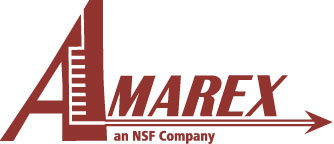- Home
- News and Resources
- Resources
- Leveraging ODS RTF Techniques for Effective Tables and Listings in Clinical Reporting
Leveraging ODS RTF Techniques for Effective Tables and Listings in Clinical Reporting
The Output Delivery System (ODS) in SAS is a powerful feature that enables users to generate output in various file formats, making it increasingly popular in clinical reporting. The ODS within SAS offers a versatile range of file formats, including RTF, HTML, and PDF, each providing unique benefits for data presentation. Among these, RTF (Rich Text Format) is particularly valuable for creating highly customizable, publication-ready reports. ODS RTF also facilitates style harmonization across tables, listings, and final reports, simplifies the incorporation of tables into documents, and supports advanced formatting options such as superscripts and subscripts.
Benefits of ODS RTF
- Enhanced Visual Appeal: ODS RTF produces more visually appealing outputs, improving the readability and overall appearance of clinical reports.
- Graphical Integration: RTF files are well-suited for integration with graphical data, ensuring the seamless presentation of complex information.
- Quality Control: Outputs in RTF format can be read back into SAS for quality control, facilitating robust validation processes.
- Consistent Styling: ODS RTF enables the standardization of fonts across tables, listings, and final reports, ensuring a cohesive look.
- Advanced Formatting: The format supports various styles, including superscripts and subscripts, allowing for detailed and precise data representation.
- Custom Styles: Styles can be created, and customized using PROC TEMPLATE enabling researchers to adjust font styles, colors, and layouts to meet specific regulatory or organizational standards.
- Standard Templates: Standard style templates can be developed to meet the needs of different sponsors, ensuring consistency across reports.
- Enhanced Navigation: Bookmarks and hyperlinks can be added to the output to enhance navigation and make it easier to reference specific sections within the document.
- Cross-Platform Compatibility: RTF files are compatible with various word processors and can be easily shared across different platforms.
- Regulatory Acceptance: The RTF format is widely accepted by regulatory agencies, simplifying the preparation of documents that meet submission requirements.
Considerations for Using ODS RTF
- Page Splitting: Carefully implement page splits to maintain content continuity and ensure proper display of grouping variables on subsequent pages.
- Consistent Titles and Footnotes: Ensure that titles and footnotes are printed on every page by using appropriate settings. The BODYTITLE option may remove titles and footnotes from the header and footer section, potentially preventing them from appearing on every page.
- Formatting Options: Use ASIS=ON to preserve the formatting of text exactly as it appears in the source dataset. This helps maintain proper indentation in specific columns based on template requirements.
- Advanced Text Formatting: Use ODS ESCAPECHAR to include formatting such as superscripts and subscripts.
- Standard Style Template: Develop a standardized style template using PROC TEMPLATE to define margins, fonts, header styles, column formats, titles, and footnotes. This approach eliminates the need to update these elements for each program, reducing the time spent on each output and providing consistent formatting.
- Spanning Headers: Create a dummy variable with missing records to add space between columns and split underlines, ensuring proper formatting.
- Handling Large Data Sets: Large datasets can result in extensive tables that may be challenging to read in a single document. Consider splitting large tables across multiple pages or summarizing data to enhance clarity and readability.
Conclusion
By employing effective ODS RTF techniques and options, users can significantly enhance the quality and customization of their clinical report outputs. These methods not only improve the visual presentation but also facilitate easier integration and validation, ultimately contributing to more professional and reliable clinical documentation.
Our Experts Bio
Harika Myneni is the Director of Scientific Programming at Amarex Clinical Research, where she has consistently excelled in developing innovative processes and optimizing programming standards. She holds a master’s degree in Pharmaceutical Sciences from GITAM University, India, and is a SAS Certified Professional in Advanced Programming. Throughout her career, Harika has been recognized for her expertise in developing complex macros and standard programs, as well as her strong data analysis skills. Her contributions have been instrumental in enhancing both the efficiency and accuracy of programming within the organization.
References:
- Annet te Velde: Styling statistical output – a CRO perspective –
- Christopher J. Smith, Cytel; Joshua M. Horstman: Upgrading Clinical Trial Reports from ODS LISTING to ODS TAGSETS.RTF, SESUG 2020 Paper 137
- Carol Matthews, Elena Kalchenko: Pretty Please?! Making RTF Output “Pretty” with SAS PharmaSUG 2013 - Paper IB08
- Haworth, Lauren E., Zender, Cynthia L., and Burlew, Michele M. 2009. Output Delivery System: The Basics and Beyond. Cary, NC: SAS Institute Inc.
